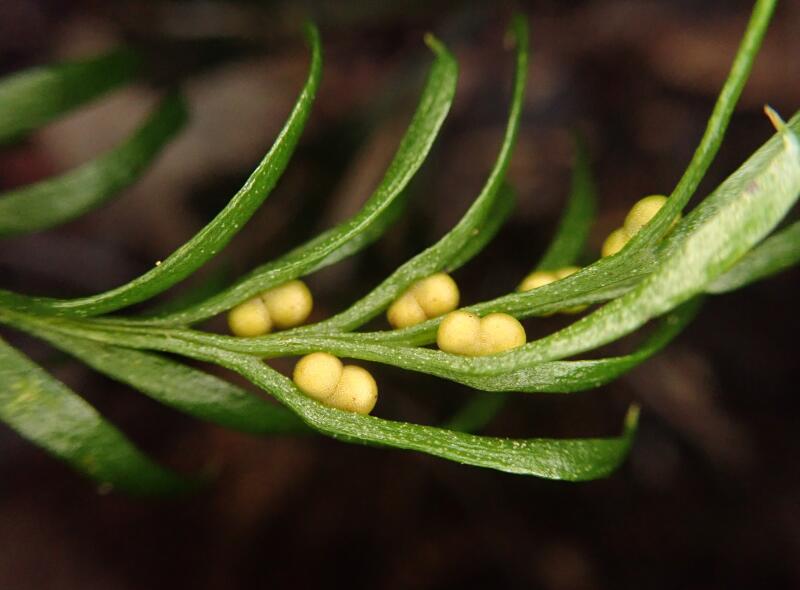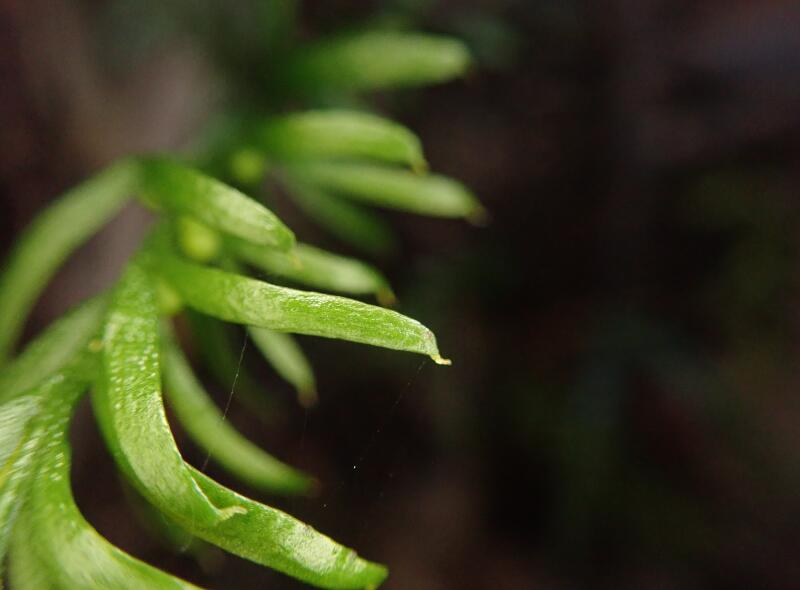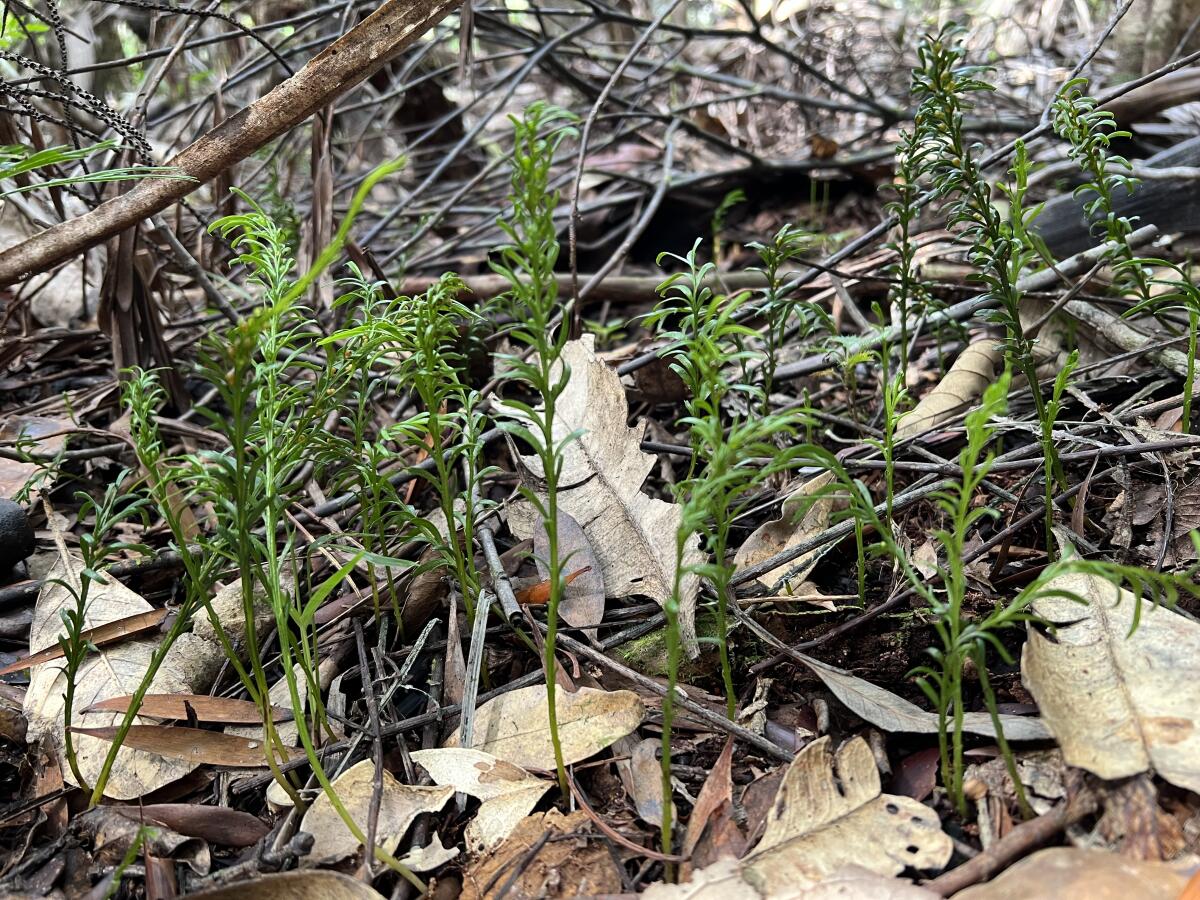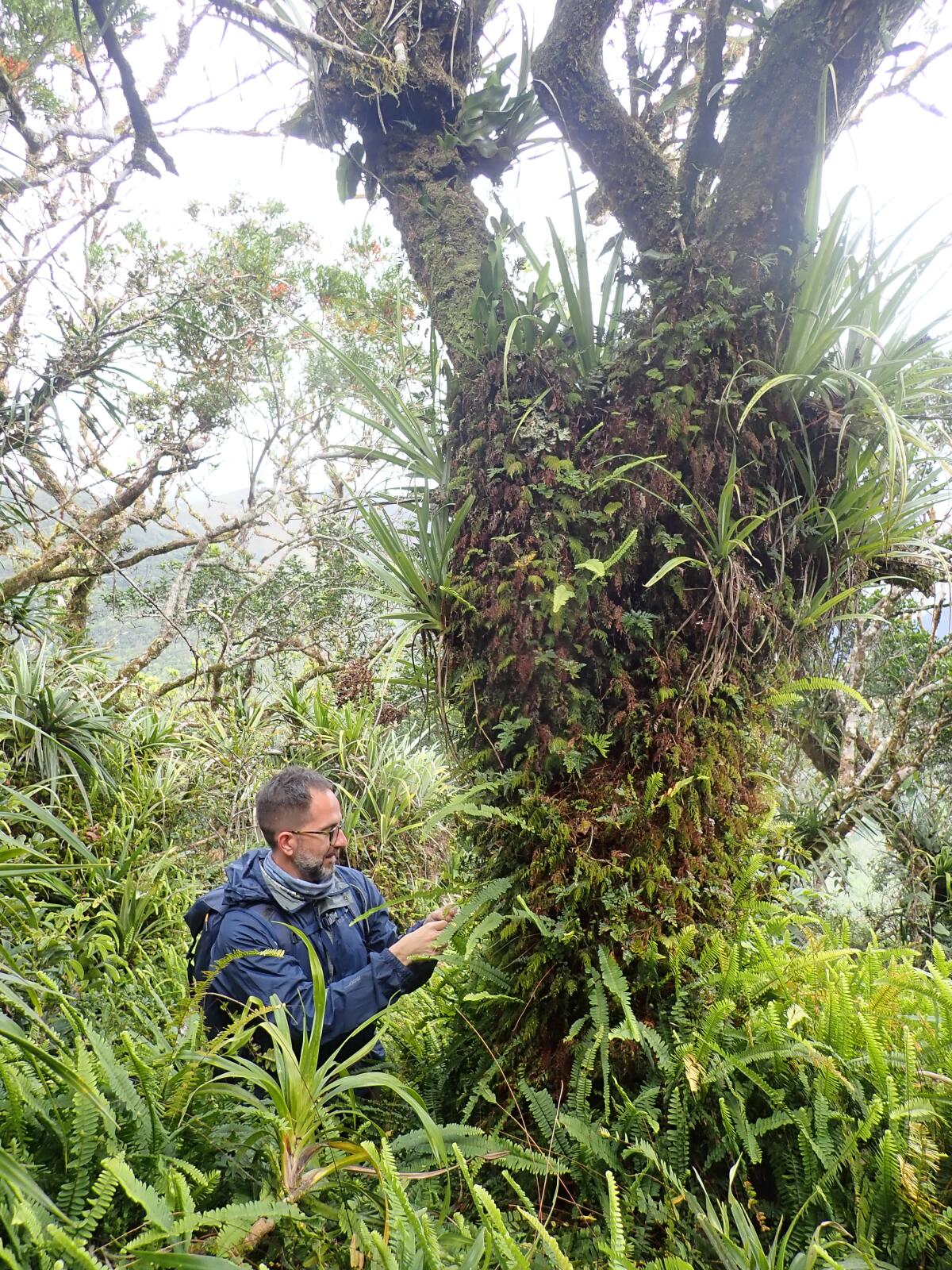Tmesipteris oblancolata is an obscure species of fork fern found in New Caledonia, a French territory in the South Pacific. This humble plant, measuring only 4 to 6 inches tall, is in some ways the most extraordinary living thing in the world.
“You would step over it. You could even step on it without knowing it,” said Ilia Leitch, a plant evolutionary biologist and senior research leader at the Royal Botanic Gardens, Kew, in the United Kingdom. “But it harbors this great secret inside.”
Recently, T.oblancolata entered the Guinness Book of World Records after a team of scientists determined that the wispy fern has the largest known genome of any living organism. Crammed into the nucleus of each of its cells are 160.45 billion base pairs—160.45 billion rungs on the revolving double-helix ladder that is plant DNA.
T.oblancolata has more genes than the mighty California redwood (Sequoia sempervirens) or the enormous blue whale (Balaenoptera musculus). It has 50 times more DNA than Homo sapiens, the species that discovered what DNA is in the first place. The findings were published in iScience magazine.
“We were absolutely amazed when we discovered the size of this genome,” said botanist Jaume Pellicer of the Barcelona Botanical Institute in Spain, a co-author of the study with Leitch. “We already knew of the existence of giant genomes in the genus, but we did not anticipate that Tmesipteris oblancolata “It was going to beat any previous record.”
A genome contains all the information that cells need to direct the growth and development of the organism. But life does not offer ordered instructions, more steps, more complexity, like Ikea or Lego assembly manuals; hence the small ferns with giant genetic codes.


you could step T.oblancolata “without knowing it,” said one plant evolutionary biologist. (Photographs by Pol Fernández and Oriane Hidalgo)
Measuring genome size “is not a way to measure genome complexity or coding capacity,” said Elliot Meyerowitz, a Caltech biologist who was not involved in the research.
Only a tiny portion of the genetic material carried by most plant and animal cells actually contains direct instructions on how to make the basic components that make up living things. In reality, less than 2% of the human genome encodes proteins. In the case of the hairpin fern, the research team estimates that less than 1% of its genome does so.
The rest is known as non-coding DNA. Understanding what that noncoding genetic material does and why cells carry it are among the most important questions in evolutionary biology.
half a century ago, scientists fired This non-coding material is called “junk DNA,” a term now considered “a reflection of our own ignorance,” Leitch said.
It's not that all this is of no use, he said. We just still don't understand everything he does.

T.oblancolata Ferns grow among tangled branches and fallen leaves.
(Jaume Pellicer)
In recent years, researchers have discovered that manipulating or deleting some of these non-coding sequences affects gene expression. This suggests that at least some of this material plays a role in the processes that “switch” genes on and off, “like the conductor of an orchestra, saying who comes in here and who should be silent here,” Leitch said.
This intricate choreography of genetic expression is how we obtain the incredible diversity within our own species and across all kingdoms of living things.
“Understanding how these genomes function and are structured represents the latest milestone in this field of research,” Pellicer wrote in an email. “But for now, it's like trying to read an instruction book without even knowing where the first page is!”
T.oblancolata move the previous genome record holdera modest sized flowering plant called Japanese Paris which has 149 billion base pairs. While there may be something else with a greater genetic impact, botanists believe that these plants are at the upper end of the amount of DNA a living thing can have.

A researcher searches for hairpin ferns in New Caledonia.
(Oriana Hidalgo)
“If it's not the largest, it's very close to it,” Leitch said of the fork fern genome. “There are so many consequences associated with having so much DNA that I think we are at the limits of what biology can cope with.”
An organism has to divide its cells in order to grow, and before it can do so it has to make a copy of all the DNA in its cells. Copying a colossal genome is a huge investment of time, energy and nutrients, Leitch said. In the case of plants, larger genomes are associated with slower growth and less efficient photosynthesis.
As a result, organisms with massive genomes tend to be found in stable environments without much competition, Leitch said. that's true of T.oblancolataSlow growth Japanese Paris and the marbled lungfishpossessor of the largest genome in the animal kingdom (almost 130 billion base pairs).
Unfortunately for T.oblancolataIt is increasingly difficult to achieve stable conditions in a rapidly changing climate.
“As long as they're stable, as long as things don't change, selection won't eliminate them, so to speak,” Leitch said. “I would predict that if the environment changed, they would not be in a good position.”












